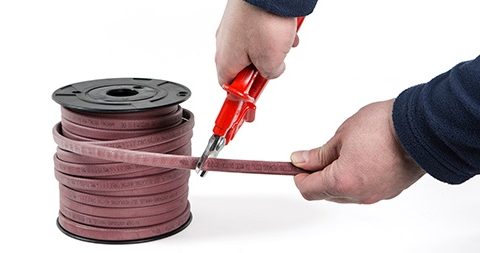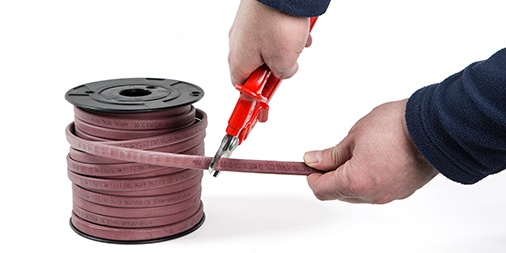Determining the total length of heating cable needed for a project can be a challenge. With many factors such as size and space available to consider, the task can seem daunting, especially for larger projects with more infrastructure to consider.
However, the calculations are quite simple, as long as you keep a few things in mind. To determine the total length of heating cable required, add up the lengths needed for each component in the entire piping system. Let’s take a look at some helpful tips for doing this.
For the Piping
Calculate the amount of heating cable required for the pipe length. In the case of a straight heating cable run, this is equal to the total length of the piping.
- Entry into junction box and end seal: add at least 3 ft / 1 m
- Compensation for bends, flanges, elbows: add 5 – 10% to the total length
For Each Valve
Add the following heating cable lengths:
| Pipe Diameter (IPS) (inches) | Heating Cable (ft) | Heating Cable (m) | Comments |
| 1/4 | 0.3 | 0.09 | These recommendations are limited by the amount of heating cable that can physically be installed on small valves. Heat loss may not be fully compensated under extreme conditions. |
| 1/2 | 0.8 | 0.24 | |
| 3/4 | 1.3 | 0.4 | |
| 1 | 2.0 | 0.6 | |
| 1-1/4 | 3.3 | 1.1 | |
| 1-1/2 | 4.3 | 1.3 | |
| 2 | 4.3 | 1.3 | |
| 3 | 4.3 | 1.3 | |
| 4 | 4.3 | 1.3 | |
| 6 | 5.0 | 1.5 | |
| 8 | 5.0 | 1.5 | |
| 10 | 5.6 | 1.7 | These numbers represent the minimum amount of heating cable required for a service loop. Additional cable may be required to compensate for total heat loss. |
| 14 | 7.3 | 2.2 | |
| 18 | 9.4 | 2.9 | |
| 24 | 12.6 | 3.8 |
Example: 2 Inch Pipe:
| Heating cable length = pipe length: 30 ft = | 30 ft |
| Junction box entry + end seal = | 3 ft |
| Flanges: 5% = | 1.65 ft |
| Valves: 3 valves x 4.3 ft | 12.9 ft |
| Total length: | 47.55 ft |
Ready to learn more? Contact a Winter Expert to help with more complex systems and calculations.



